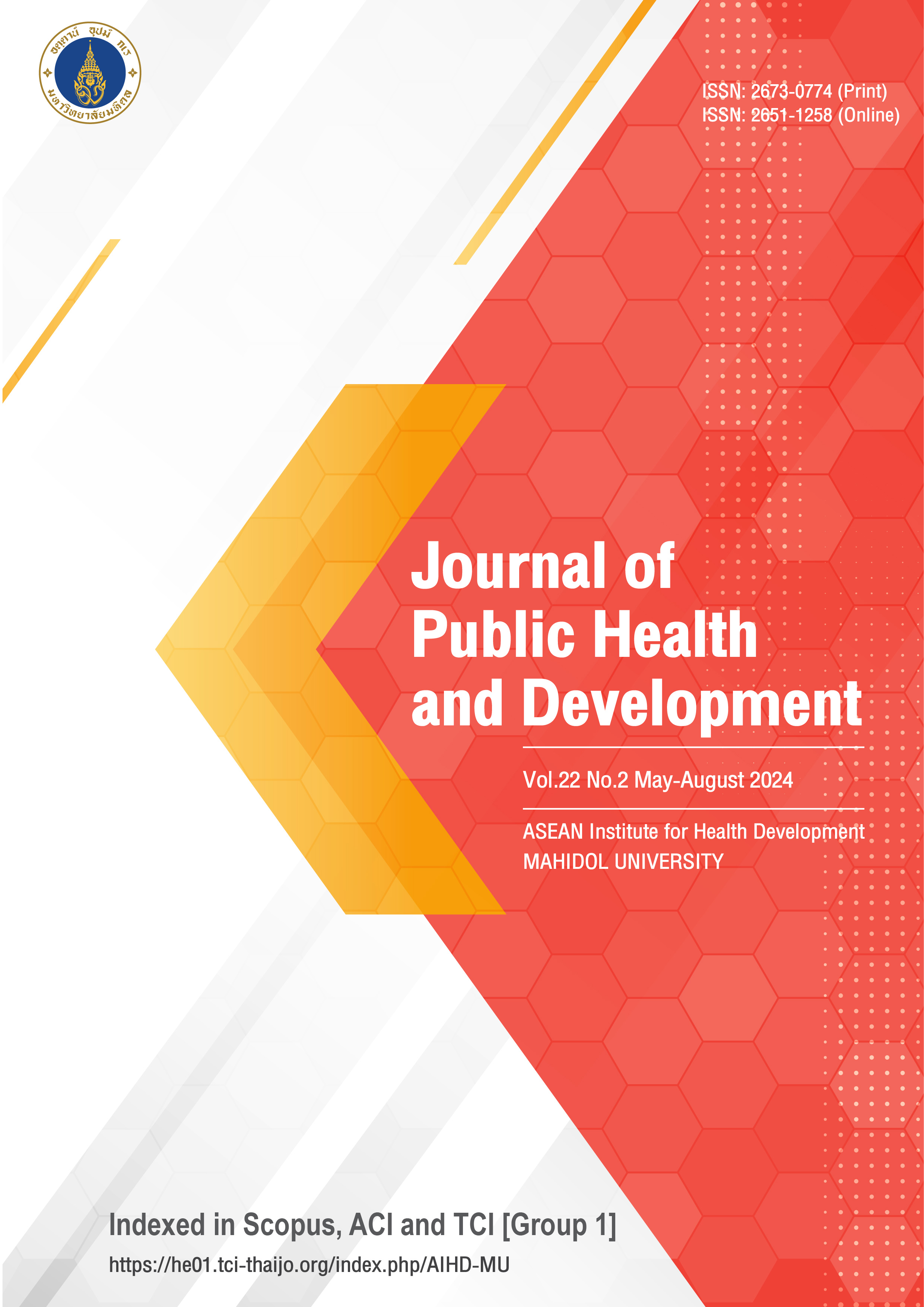Disparities in sugar-sweetened beverage expenditures: insights from Indonesian urban and rural households 10.55131/jphd/2024/220214
Main Article Content
Abstract
Excessive consumption of sugar-sweetened beverages (SSBs) poses a significant health risk because of their poor nutritional content. This study investigates SSB expenditure among Indonesian households with the goal to analyse disparities and determinants in urban and rural areas. Using the data from March 2022 national socio-economic survey, percentages and means were calculated, and binary probit analysis was performed. The results indicate that the majority of Indonesian households (73.59%) purchase sugary drinks, with slightly higher proportions and mean SSB expenditures observed in rural compared to urban households. Household SSB expenditure at the national level exhibits linear associations with quintiles of household food expenditure and size, a consistent pattern observed in both rural and urban areas. Notably, household composition, including a larger number of children, female adults, and elderly individuals, correlates with reduced SSB expenditures in urban households, while no such trend is observed in rural counterparts. Despite similar access to sugary drinks in rural and urban areas, urgent attention is needed to enhance health literacy among rural households. Interventions through formal education institutions or community-driven initiatives are crucial to address this important health concern and foster healthier beverage choices across the diverse Indonesian landscape.
Article Details

This work is licensed under a Creative Commons Attribution-NonCommercial-NoDerivatives 4.0 International License.
References
AlFaris NA, Alshwaiyat NM, Alkhalidy H, AlTamimi JZ, Alagal RI, Alsaikan RA, et al. Sugar-sweetened beverages consumption in a multi-ethnic population of middle-aged men and association with sociodemographic variables and obesity. Front Nutr. 2022;9:1–12. doi: 10.3389/fnut. 2022.987048.
Azad AK, Huque R. The crowding-out effect of sugar-sweetened beverages (SSBs) on household expenditure patterns in Bangladesh. BMC Public Health. 2023;23(1):1–13. doi: 10.1186/ s12889-023-16290-7.
Sylvetsky AC, Visek AJ, Halberg S, Rhee DK, Ongaro Z, Essel KD, et al. Beyond taste and easy access: Physical, cognitive, interpersonal, and emotional reasons for sugary drink consumption among children and adolescents. Appetite. 2020;155(104826). doi: 10.1016/j.appet.2020.104826.
Kansagra SM, Kennelly MO, Nonas CA, Curtis CJ, Van Wye G, Goodman A, et al. Reducing sugary drink consumption: New York City’s approach. Am J Public Health. 2015; 105(4):e61–4. doi: 10.2105/AJPH. 2014.302497.
Sundborn G, Merriman TR, Thornley S, Metcalf P, Jackson R. An “end-game” for sugar sweetened beverages? Pac Health Dialog. 2014;20(1):22–30.
Eyles H, Ni Mhurchu C, Nghiem N, Blakely T. Food Pricing Strategies, Population Diets, and Non-Communicable Disease: A Systematic Review of Simulation Studies. PLOS MED. 2012;9(12). doi: 10.1371/journal pmed.1001353.
Hunter DJ, Reddy KS. Noncommunicable Diseases. N Engl J Med. 2013;369(14):1336–43.
Cesare M Di, Khang YH, Asaria P, Blakely T, Cowan MJ, Farzadfar F, et al. Inequalities in non-communicable diseases and effective responses. Lancet. 2013;381(9866):585–97. doi: 10.1016/S0140-6736(12)61851-0.
Yan RR, Chan CB, Louie JCY. Current WHO recommendation to reduce free sugar intake from all sources to below 10% of daily energy intake for supporting overall health is not well supported by available evidence. Am J Clin Nutr. 2022;116(1):15–39. doi: 10.1093/ajcn/nqac084.
Daeli WAC, Nurwahyuni A. Determinan Sosial Ekonomi Konsumsi Minuman Berpemanis di Indonesia: Analisis Data Susenas 2017. J Ekon Kesehat Indones. 2019;4(1).
Paraje G, Gomes FS. Expenditures on sugar-sweetened beverages in Jamaica and its association with household budget allocation. BMC Public Health. 2022;22(1):1–11. doi: 10.1186/s12889-022-12959-7.
Sanjaya MR, Sadono ED. Consumption Patterns of Sugar-Sweetened Beverages in Indonesia. Southeast Asian J Econ. 2022;10(2):181–208.
Solanke BL, Kupoluyi JA, Awoleye AF, Adewole OE, Babalola OB. Women’s ability to negotiate safer sex with partners by contraceptive status among a nationally representative sample of married women in Nigeria. Contracept Reprod Med. 2023;8(1):1–14. doi: 10.1186/s40834-023-00214-2.
Sitohang MY. Reducing the Consumption of Sugar-Sweetened Beverages among Children and Adolescents. Populasi. 2022;30(1):74.
Krieger J, Bleich SN, Scarmo S, Ng SW. Sugar-Sweetened Beverage Reduction Policies: Progress and Promise. Annu Rev Public Health. 2021;42:439–61. doi: 10.1146/ annurev-publhealth-090419-103005.
McKeown RE. The Epidemiologic Transition: Changing Patterns of Mortality and Population Dynamics. Am J Lifestyle Med. 2009;3(1). doi: 10.1177/1559827609335350.
Laksmi PW, Morin C, Gandy J, Moreno LA, Kavouras SA, Martinez H, et al. Fluid intake of children, adolescents and adults in Indonesia: results of the 2016 Liq.In7 national cross-sectional survey. Eur J Nutr. 2018;57(3):89–100. doi: 10.1007/s00394-018-1740-z.
Sartika RAD, Atmarita, Duki MIZ, Bardosono S, Wibowo L, Lukito W. Consumption of Sugar-Sweetened Beverages and Its Potential Health Implications in Indonesia. Kesmas. 2022;17(1):1–9.
Statistics indonesia. SUSENAS. Statistics indonesia. 2022.
Agresti A. Analyzing Contingency Tables. An Introduction to Categorical Analysis, 3rd Edition. 2019. p.36–42.
Habyarimana JB. Determinants of Household Food Inserucity in Developing Countries: Evidences from a Probit Model for the Case of Rural Households in Rwanda. Sustain Agric Res. 2015;4(2):78–91.
Chen C, Lu Z, Wang X, Zhang J, Zhang D, Li S. Sugar-sweetened beverages consumption is associated with worse cognitive functions in older adults : from the national health and nutrition examination survey and food patterns equivalents database. Nutr Neurosci. 2023;26(10):1011–8. doi: 10.1080/ 1028415X.2022.2115242.
Lee BY, Ferguson MC, Hertenstein DL, Adam A, Zenkov E, Wang PI, et al. Simulating the Impact of Sugar-Sweetened Beverage Warning Labels in Three Cities. Am J Prev Med. 2018;54(2):197–204. doi: 10.1016/ j.amepre.2017.11.003.
Dono J, Ettridge K, Wakefield M, Pettigrew S, Coveney J, Roder D, et al. Nothing beats taste or convenience: a national survey of where and why people buy sugary drinks in Australia. Aust N Z J Public Health. 2020; 44(4):291–4. doi: 10.1111/1753-6405.13000.
Widarjono A, Afin R, Id GK, Firdaus MZ, Herlinda O. Taxing sugar sweetened beverages in Indonesia : Projections of demand change and fiscal revenue. PLOS MED. 2023; 18(12):1–11. doi: 10.1371/journal. pone.0293913.
Arifin B, Azam N, Martianto D, Sari LL, Firdaus AH. The Future of Indonesian Food Consumption. Indones J Econ. 2019;8(1):71–102.
Putra AS, Tong G, Pribadi DO. Food Security Challenges in Rapidly Urbanizing Developing Countries : Insight from Indonesia. Sustainability. 2020;12(9550):8–10.
Indonesia Ministry of Health. Indonesia Ministry of Health Regulation about inclusion of sugar, salt, and fat content as well as health messages on processed food and fast food. Indoneisia; 2013.
Watts AW, Miller J, Larson NI, Eisenberg ME, Story MT, Neumark-Sztainer D. Multicontextual correlates of adolescent sugar-sweetened beverage intake. Eat Behav. 2018;30: 42–8. doi: 10.1016/j.eatbeh.2018.04.003.






